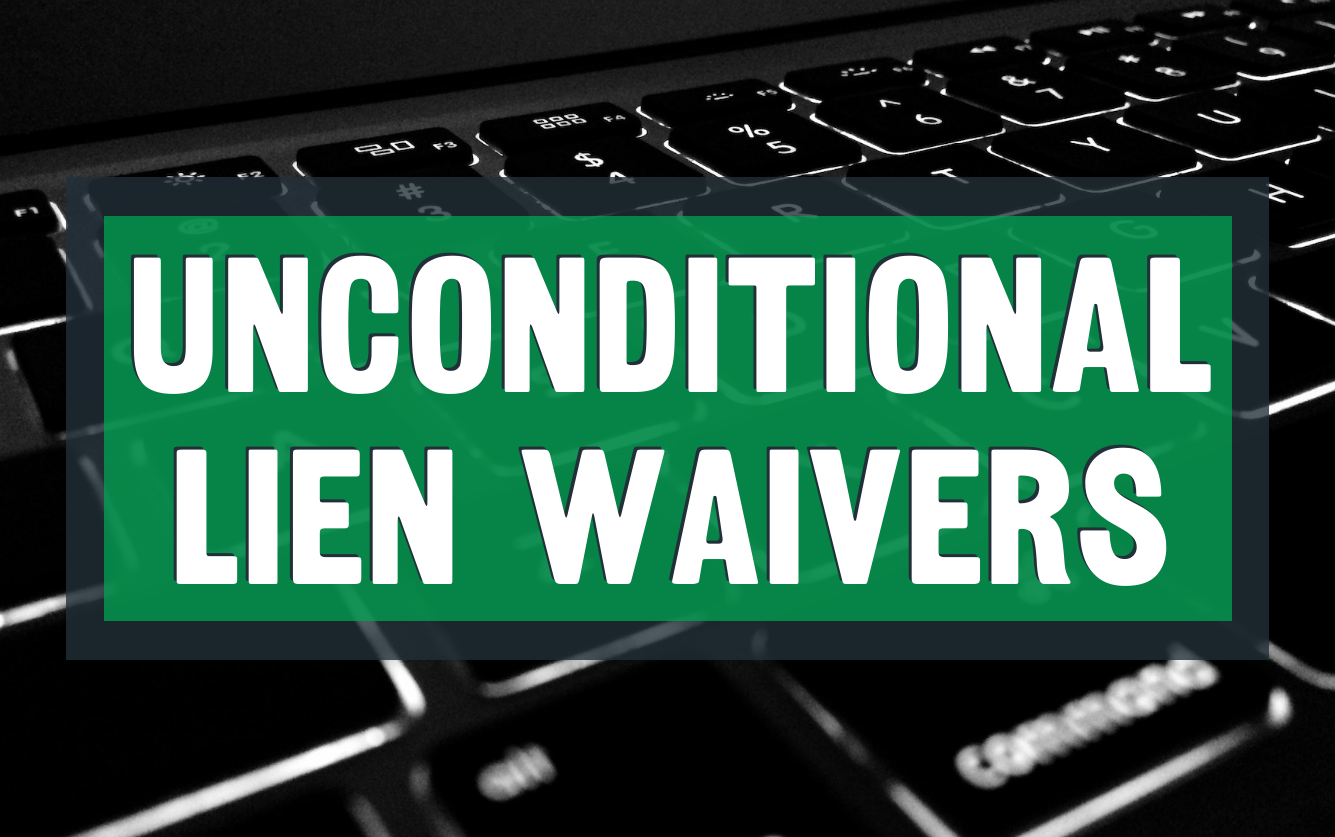
Lien Waiver Language Part 2: Unconditional Lien Waivers
Every lien waiver should clearly identify the property name & project location, the debtor’s name (your customer), the invoice or purchase order number, the payment amount and the disputed claim amount. You can learn more about lien waivers in our earlier post 4 primary types of lien waivers.
In part 1 of this series, we covered the language within a conditional lien waiver, which means part 2 is dedicated to the language within unconditional lien waivers.
Unconditional Lien Waivers
Unconditional lien waivers can be dangerous if blindly signed, as the signor is waiving all rights to further remedy regardless of whether or not payment has cleared. As you will see, the language in an unconditional waiver is absolute:
The undersigned has been paid and has received a progress payment in the above referenced Payment Amount for all work, materials and equipment the undersigned furnished to his Customer for all above described Property and does hereby waive and release any notice of lien, any private bond right, any claim for payment and any rights under any similar ordinance, rule or statute related to payment rights that the undersigned has on the above described Property to the following extent:
An unconditional partial waiver will also include wording similar to the conditional partial waiver, with respect to the monies received: “…covers a progress payment for all work, materials and equipment furnished by…”
The unconditional final lien waiver is generally the “end,” meaning there is no turning back from an executed unconditional lien waiver – even if your debtor fails to pay or payment does not clear:
The undersigned has been paid in full for all work, materials and equipment the undersigned furnished to his Customer for the above described Property and does hereby waive and release any notice of lien, any private bond right, any claim for payment and any rights under any similar ordinance, rule or statute related to payment rights that the undersigned has on the above described Property, except for the payment of the Disputed Claims, if any, noted above.
Be extremely cautious when signing an unconditional final waiver!
When in doubt, seek a legal opinion – signing the “wrong” document could eliminate your mechanic’s lien and bond claim rights.

NetNow Partners with NCS Credit
NetNow and NCS Credit launch an integration that brings notice, waiver, and lien tools into one platform to improve efficiency and protect payment rights.

What Is a Bankruptcy Proof of Claim?
Learn about bankruptcy proof of claim, its importance, and filing process.

UCC Filings: Common Forms & Types
Learn about UCC filings, including UCC-1, UCC-3, UCC-5, and UCC-11 forms. Understand key filing types and how each protects creditors.